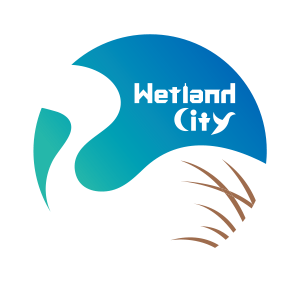
Sri Songkhram District
Home > Sri Songkhram District
The Songkhram River is an important tributary of the Mekong River, located in the area of the Songkhram Basin, divided into the upper Songkhram Basin and the lower Songkhram Basin. There is a total basin area of approximately 6,472 square kilometers or approximately 4,045,000 rai, covering 5 provinces; Sakon Nakhon, Udon Thani, Nong Khai, Bueng Kan, and Nakhon Phanom. It originates from the Phu Phan Mountain range, Phu Pha Hak, Phu Pha Ploen, and Phu Pha Lek areas in Tha Sila Subdistrict, Song Dao District, Sakon Nakhon Province. It flows through 5 provinces and 33 districts with a length of approximately 540 kilometers. The lower Songkhram Basin area consists of 3 provinces; Sakon Nakhon, Bueng Kan, and Nakhon Phanom, and has an area of approximately 1,981,868 rai. In the Nakhon Phanom province, The Songkhram Basin area has an area of approximately 600,000 rai (660 square kilometers).
Lower Songkhram River Wetland, Nakhon Phanom Province has been registered as an area of Wetlands of international importance (Ramsar Site) No. 2,420 in the world and No. 15 in the country. The boundary starts from Paknam Chai Buri, Chai Buri Subdistrict, Tha Uthen District to Ban Pak Yam, Sam Phong Subdistrict, and Si Songkhram District. The total length is 92 kilometers, with the proposed area being designated as the Ramsar Site. It covers only the lower part of the Songkhram River and freshwater swamp forests are adjacent to both sides of the river. The reservoir area, the area of freshwater swamp forest, community forest of the people, are the Ramsar site area totaling 34,381 rai (the total area of the Songkhram Basin is approximately 600,000 rai or 660 square kilometers).
The distinctiveness and uniqueness of this wetland is an ecosystem that is hard to find: there is a large area of forest, which is important in terms of the biological diversity of plant and animal species in the ecosystem. It is a habitat for freshwater fish species. It is a local fishing source that is important to the food security of the people in the area. It is also a migratory source for breeding and spawning fish species from the Mekong River during the flood season. In addition, a survey found a diversity of at least 124 fish species and 208 plant species, therefore it is both important in terms of biological diversity and importance in local culture and economy in the Mekong River Basin region.